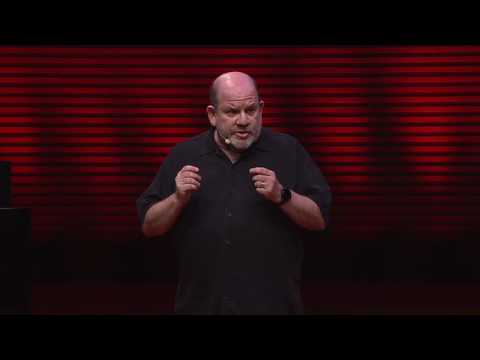5.5: How does the government influence unions?
- Last updated
- Save as PDF
- Page ID
- 80247

- Elizabeth B. Pearce
- Linn-Benton Community College via OpenOregon
As discussed in the Social Construction of Families chapter, these authors believe that each person is the master of their own social and family identities. Social institutions, however, also define “family” via rights, responsibilities, benefits, and taxes. While the federal government leaps to mind as the arbiter of family definitions for taxation and benefits purposes, state and local governments are the primary legislators of family law and mediators of familial relationships. This was an intentional decision made during the formation of the United States of America: that states and local municipalities be the governors of matters related to the family. It is only when there is enough disruption amongst the states that matters of the family rise to the national decision-making level; a good example is that when many highly differentiated laws related to same-sex marriage created inequities for families within states and disruption for families who moved from state to state. The 2015 Supreme Court decision[1] that the right to marry is fundamental and must be available to all couples created consistency in marriage law.
In addition to government entities, institutions such as employers, schools, and insurance companies all have the authority to define family within certain parameters and to limit benefits such as sick leave, insurance coverage, and pension benefits. We know that these institutions impact the resources and benefits that families receive based on their structure and legal ties to one another. One question is, how do these varied definitions, policies and practices affect partner and family formation and dissolutions? Whom we connect with, love, parent, marry, and divorce affects our access to resources in ways that are inequitable. The complexity of factors in choosing a partner(s) or in forming a family is difficult to analyze and study. Here, we will talk about how institutional policies and practices may play a role in those decisions. Federal Student Aid and student loans, Medicaid and Medicare, Social Security and Income Taxes, Immigration law, Military Housing Policies and Health Care Insurance all rely on definitions of partner and family structures in order to assign taxes, rights, privileges, and benefits.
Federal Student Aid and Loans
Let’s start with what might be most familiar to the reader: Federal Student Aid and loans. Whether or not you have qualified for federal grants and loans, the system affects you and the authors expect that you know this quite well.
The Aid system makes some assumptions about families: first that parents will pay for their children’s (younger than 24 years) education. Conversely, they consider a child who is 24 years or older to be “independent” and that their parents will not be contributing to their education. Making this distinction leads to the government considering the parents’ income and accumulated wealth when it comes to awarding financial aid, but only when students are younger than 24 years. Right away we can see some flaws and inequities in this regulation. Some parents will pay for education regardless of the child’s age; others will not. Some families have accumulated wealth over generations of privilege; others may have gone without necessities to set aside savings for a health care crisis or retirement. (All wealth is not created equally). This rule does not recognize the nuances of the parent-child relationship or the privilege and oppression that contributes to the attainment of wealth and savings.
The Federal Aid system also differentiates between married couples and cohabiting or common law relationships. It presumes that a married couple combines their resources and that a cohabiting couple does not; so marrying a partner who has a higher income will likely lessen a financial aid award, while cohabiting with them will not.
Student debt is becoming an increasingly common issue for graduates and for people who do not complete a degree. College costs have increased dramatically in the past forty years, and student debt rates have followed. Does student debt influence the likelihood of marriage? Since many wish to be financially stable before marrying, it is possible. Anecdotal reports and news stories indicate that people are delaying marriage based on student debt loads. Studying this is complicated, but one demographic review found that women were more likely to put off marriage when they had student loans to repay.[2]
Social Security and Income Taxes
Income taxes and Social Security are heavily dependent on the institutional marriage of the mid-twentieth century, specifically the breadwinner-homemaker model. Couples were more homogeneous at that time; likely to marry early and stay married longer, with men typically earning more or much of the income. Both the federal income tax system and the Social Security systems evolved over the 20th century to correct what was considered to be the most common gender injustice: that many women made less money than their spouses.
These systems failed to take into account the racial injustice of the times; when Social Security was implemented in 1935 it excluded all domestic and farm workers who were primarily Black people and immigrants. Both groups were added in the 1950’s.

Much has been discussed about the “marriage bonus” and the “marriage penalty” , meaning that some couples benefit from marrying and some couples pay more taxes when they marry. The federal and state systems have changed over the years but face what is called the “trilemma” by tax experts: systems cannot simultaneously impose progressive marginal tax rates, assess equal taxes on married couples with equal earnings, and maintain marriage neutrality (meaning that married and unmarried couples pay the same amount of taxes). The net result from the trilemma is that married couples whose individual incomes are comparable pay more in taxes than a couple whose incomes are dramatically different.[3]
Both Social Security, with its survivor benefit emphasis and Income Taxes focus on the marriage ideal from the last century: one spouse (usually male) who earns most of the family’s income, and a lower-earning spouse (usually female). But this has not been the norm for over 50 years, and many argue that these systems need to catch up. As explained by the Postmodern Theory, choice and individuality are emphasized in today’s society. Diverse relationships are accepted more readily and marriages are less assortative in most ways. Marriage is declining; people wait longer to marry, are less likely to marry, and stay married for fewer years. Couples are more likely to have equal rather than disparate individual incomes. All of these factors point to the inadequacy of the current systems and raise the question about whether these policies influence people’s choice to marry or otherwise partner up.
Medicaid and Medicare
Let’s review general definitions of each of these programs, which are frequently confused. Medicare is federally funded health insurance for people who are aged 65 or older, some younger people with disabilities, and people with end-stage renal disease. Medicaid also provides health care coverage, in this case for eligible low-income adults, children, pregnant women, elderly adults and people with disabilities. To read about who and how to qualify, review these government websites:
Like income taxes and social security, these government programs are built on a marriage model. This model presumes shared incomes and budgets for married households, and separate budgets for people who live together and are related in other ways, such as friendship, cohabitation, or blood ties.

Chronic disease and acute injuries can lead to staggering bills, even for families who have private or public health insurance and is a major contributor to bankruptcy, loss of home, remaining in poverty, and other financial crises. Eligibility for Medicare and Medicaid can not only save physical life, but economic and family stability. But eligibility is complicated.
To learn about a classic dilemma that a family with a health crisis faces, listen to this 19 minute interview with Carol Levine, a public health professional who faced a personal and health crisis when her husband was in a devastating car accident. As you listen, ask yourself, what would you do in a similar situation? And how does this relate to love, health equity, partnership and the institution of marriage?
To learn about a classic dilemma that a family with a health crisis faces, listen to this 19 minute interview with Carol Levine, a public health professional who faced a personal and health crisis when her husband was in a devastating car accident. As you listen, ask yourself, what would you do in a similar situation? And how does this relate to love, health equity, partnership and the institution of marriage?
Military Policies
The branches of the military which include the Army, Marine Corps, Navy, Air Force, and the Coast Guard are funded by the federal government. As the employer, the federal government has particular policies that apply to families. Two of the most well known apply to relationships, sexuality and to marriage.

For the majority of this nation’s military history, members of the LGBTQ+ community have been disqualified from employment and service. This doesn’t mean that they didn’t serve, but they were stigmatized, and hidden. The policy changed for the years between 1994 and 2011, when the infamous rule “Don’t Ask, Don’t Tell, Don’t Pursue” (Don’t Ask, Don’t Tell or DADT) was in effect. During this time, gay men, lesbian women and bisexual people were permitted to be employed as long as they did not exhibit or talk about conduct that could be identified in these ways; in addition others were prohibited from discriminating against or harassing them. The “Don’t Pursue” aspect of the regulation limited the investigations by superiors of members presumed to belong to the LGBTQ+ community.
The law, which appeared to signify progress, still resulted in many members of the military experiencing stigma, stalled careers, discrimination, harrassment and violence. Multiple legal challenges were filed and it was eventually repealed. While the regulation has changed, stigma and harassment remain.
Necko L. Fanning, wrote this in the New York Times about his experience serving in the Army between 2011 and 2014.
“The second week after I arrived at Fort Drum, N.Y. — my first and only duty station with the Army — I found death threats slipped under the door of my barracks room. I noticed the colors first. Pink, blue and yellow; strangely happy colors at odds with the words written on them. Some were simple: slurs and epithets written in thick black Sharpie, pressed so hard into the paper that it bled through. “Faggot” and “queer fag,” the notes read. A couple were more elaborate: detailed descriptions of what might happen to me if I was caught alone, and proclamations about the wrongness of gays in the military…
…The military is built on a foundation of earning trust and proving yourself to your peers and superiors as capable. Being new to a unit isn’t unlike being a new employee at any other job. People are cautious, even wary, until you’ve shown you can handle the work. Perhaps it didn’t help that I was an intelligence analyst in an infantryman’s world — a support soldier in a combat soldier’s unit. But none of that had been mentioned in the notes. My capability wasn’t in question, nor was my duty position. It wasn’t my effectiveness or value to the unit that elicited these noxious notes but something far removed from my control. Something that after September 2011 was supposed to be meaningless.”
The military has also been known for policies that incentivize marriage. In general, single members of the armed forces live in barracks with a large group of colleagues. Married members, in contrast,live in military housing that more closely mimic suburban neighborhoods. In addition, there is a housing allowance that goes along with this privilege, resulting in married military members earning more salary and benefits. This incentive is provided by the military in order to support and stabilize families who are frequently moving and have less predictable work schedules than other government positions. Could this contribute to marriages made for financial reasons? Anecdotally, yes, there are many stories that support this theory. When taken in combination with the prohibition of LGBTQ+ people’s service, it could also serve as a double incentive: a way to avert suspicion of unsanctioned sexuality as well as a financial gain. But getting married is a complex decision and it is difficult to attribute just one aspect of life to being the primary factor in getting married.
Immigration Law
The history of immigration law is varied and complex and has favored different groups of families over time. In the most recent few years, law has changed rapidly. Here the authors will provide a few examples of the ways in which family status affects legal status and how recent and current law affect families. For special attention to how family ties affect immigration, green card, and citizenship status here are two good sources to read:
- The CATO Institute’s definitions, summaries, and overview of the line for green cards in 2019: Immigration Wait Times from Quotas Have Doubled: Green Card Backlogs Are Long, Growing, and Inequitable
- This case study about two immigrants who are scientific researchers and their children who have legal status, but who face deportation due to the delays in processing their applications:
Unpredictability about laws and status may affect partners’ decisions about union formation. Consider for yourself: if your partner’s legal status changed, would it change your feelings about them? Would it change your plans to marry or to cohabitate? Families who have been waiting for years or decades, as described in the cases above, for their status to be resolved face ongoing uncertainty and stress related to work and family.
Consider the family that has some members who are citizens, and some who have green cards. Others may be waiting for resolution, perhaps approved for Deferred Action for Childhood Arrivals (DACA), described in detail in the Justice chapter.
My Mom: Anonymous
My mom came to the United States accompanied by her aunt and uncle at the age of 14. She and my grandparents decided that it would be best for her to leave Mexico because she was no longer attending school, as they could not afford it, and she was more than likely going to be stuck working at my grandpa’s small farm for the rest of her life.
Once in the United States she was able to return to school and soon became the first in the family to graduate from high school but she found it impossible to further her education as there were no scholarships or loans available to undocumented folks at the time, so she went to work. She worked at a potato factory, met my dad, and had all her kids, including me. But right around this time DACA came around which was huge. She applied to DACA, was approved, and soon after was able to quit her factory job for a much better paying job.
Now that myself and my siblings are a little older she is considering going back to school and even buying a house but she finds herself constantly second guessing that decision as her future here in the United States is uncertain.
Official Definitions and Societal Stigma
Definitions and categories are used to assign rights, privileges, and benefits to individuals and families. Government policies grounded in these definitions are intertwined with status and stigma. For example, although same-sex and interracial marriages are now legal across the country, they still have levels of stigma associated with them, dependent on location. Cohabitation, even amongst White heterosexual couples, has less status than does marriage. Status and stigma can affect people socially and emotionally as well as economically.
Other areas that families see the effects of government definitions about partnerships and kinship groups include access to health care and health insurance which is discussed in the Health Care chapter.
As we wrap up this section about the impact of institutions on personal partnerships and relationships, what other examples have you experienced or observed?
Relationship Health and Relationship Challenge
While this course and text are primarily focused on how society, institutions, and kinship groups interact, we will spend a small amount of space here discussing the health of intimate relationships and what factors predict the longevity of the relationship.
First, watch this podcast Relationships are Hard, but Why? by Therapist Stan Tatkin.

A YouTube element has been excluded from this version of the text. You can view it online here: https://openoregon.pressbooks.pub/families/?p=855
He talks about how our brains contribute to falling in love, and then how our communication styles can contribute to feelings of being safe or being threatened within relationships.
The first half of 2020 has seen a confluence of world-wide events: the coronavirus and related pandemic; massive job loss, school closures and an economic downturn; and the resurgence of the Black Lives Matter movement. These have affected families in many ways; let’s look at two examples of how these trends and movements have uncovered challenges within intimate relationships.
An August 2020 letter to advice columnist Carolyn Hax, started out this way:
My husband and I disagree about covid precautions and have reached the point where we’re constantly fighting about it. I am more conservative and trying to have contact with only a few families I know are taking similar precautions. He’s exposing himself and his 8-year-old son, my stepson, to a lot more people, including one family that I believe does not take covid seriously. One child in this family had cold symptoms, and they refused to have him tested and continued to expose him to other kids.
At first my husband lied to me about seeing this family. After I found out, he said he won’t lie anymore but is going to do what he wants…[4]
As the writer continues and Carolyn Hax responds, they both acknowledge that the extreme pandemic experience has exposed the husband’s willingness to lie and to disregard her feelings and needs. Carolyn Hax emphasizes that this is not situation specific but actually uncovers a challenge in the relationship that must be addressed separately from the specific circumstance. She advises the letter writer that she has several options: couples’ counseling to see if the husband is willing to change this behavior, leaving the marriage, or to choose to stay knowing that she is not able to fully trust him.

A very public example of a relationship challenge comes to us from the popular television franchise: The Bachelor and The Bachelorette. Two former Bachelorette Leads, Rachel Lindsay Abasolo (Left, The Bachelorette, Season 13) and Becca Kufrin (Right,The Bachelorette, Season 14) host a podcast together, Bachelor Happy Hour. Lindsay met her husband on her season of the show and Kufrin met her fiance. Both women make some portion of their livelihood as “influencers”, as do each of their male partners.
As the Black Lives Matter movement gained more notice, and additional White allies emerged, Kufrin identified herself publicly as someone who wanted to become a more knowledgeable and active person in the racial justice movement Simultaneously her fiance, Garrett Yrigoyen, posted Instagram images that presented his support of the competing Blue Lives Matter movement. Kufrin discussed both her own personal development as well as the challenges she faced in her relationship on the podcast. If you’d like to listen to Rachel and Becca talk, listen to “Race,Diversity, and Bachelor Nation”, the June 9, 2020 episode. As of this writing, it appears that the two year relationship between Kufrin and Yrigoyen Has ended.
Families are under great pressure from the pandemic and economic stress. People of Color (POC) experience additional stress related to the public exposure of the disproportionate violence against Black people. In many cases, kinship groups are spending more time together, including those in intimate relationships. Values and belief system differences that may have been purposely hidden, or that were just implicitly undiscussable may be uncovered and affect relationships for the long-term.
If you’d like to know more about healthy relationships and which relationships are more likely to last, The Gottman Institute is a psychological research institute that studies couple interactions and nuances.
In The Science of Love podcast host Julian Hueguet describes the Gottmans’ work and predictors of success in the relationships that they have studied, primarily heterosexual married couples.

A YouTube element has been excluded from this version of the text. You can view it online here: https://openoregon.pressbooks.pub/families/?p=855
While the Gottman Institute is known for its scientific research, as with many studies the majority of participating couples are White and heterosexual. The Gottmans did participate with Dr. Robert Levenson in a twelve year study of 21 gay and 21 lesbian couples. In an effort to study underrepresented populations as well as partnerships outside of marriage, they have acknowledged this weakness and are reaching out to underrepresented people to tell their own relationship stories via a submission form on their website. You can participate here.
Licenses and Attributions
Open Content, Shared Previously
Figure 5.15. Abraham & Johvanna – Ring” by FJH Photography. License: CC BY 2.0.
Figure 5.16. “Medicare” by 401(K) 2013. License: CC BY-SA 2.0.
Figure 5.17. Military recruitment poster by U.S. Army. Public domain.
All Rights Reserved Content
Relationships Are Hard, But Why? | Stan Tatkin (c) TEDX Talks. License: Standard YouTube license.
The Secret To A Successful Relationship (c) DNews. License: Standard YouTube license.
Figure 5.18. Photo (c) Bachelor Happy Hour. Used under fair use.
- Obergefell v. Hodges, 576 U.S. 644 (2015) ↵
- Bozick, R., & Estacion, A. (2014). Do student loans delay marriage? Debt repayment and family formation in young adulthood. Demographic Research, 30, 1865–1891. https://doi.org/10.4054/DemRes.2014.30.69 ↵
- Alstott, A. L. (2013). Updating the welfare state: Marriage, the income tax, and social security in the age of individualism. Tax Law Review, 66, 720–22. https://digitalcommons.law.yale.edu/fss_papers/4867/ ↵
- Hax, C. (2020, August 22). Covid-19 will one day subside, but lying is relationship cancer. Washington Post. https://www.washingtonpost.com/lifes...741_story.html ↵

